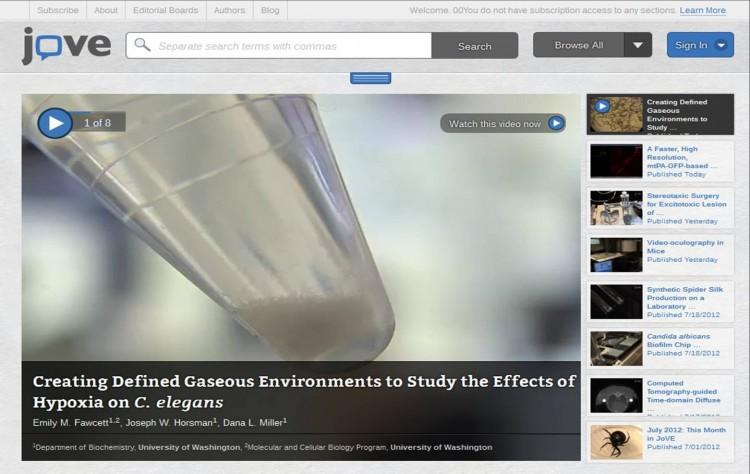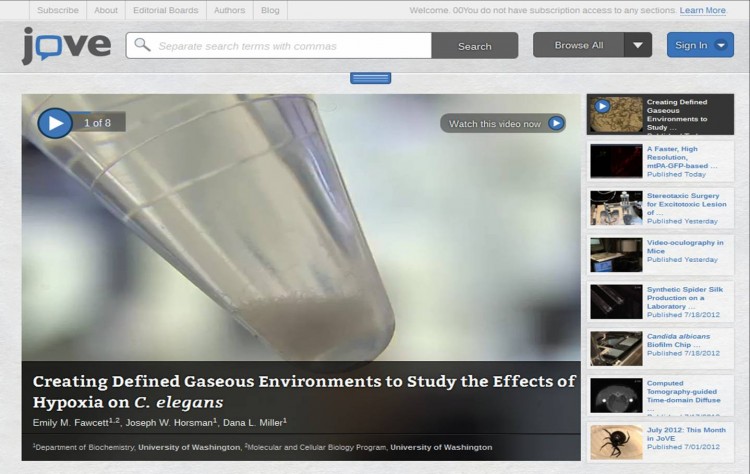Research papers have always been regarded as dull and hard to understand, but the Journal of Visualized Experiments (JoVE) has turned things around.
JoVE makes replicating research easy by creating videos where research authors demonstrate how to carry out the experiments.
A typical video published in the Journal of Visualized Experiments, demonstrating experimental procedures on the measurement of anxiety in mice from the University of Oxford.
“I came with the idea of a video-publication for biological research during my Ph.D. studies at Princeton University,” Dr. Moshe Pritsker, CEO and co-founder of JoVE, told The Epoch Times via email.
“As any other experimental biologist, I was suffering from the low reproducibility of experimental studies published in science journals. This phenomenon is due to many reasons including poor descriptions of complex experimental procedures by authors, wrong interpretations of technical details by readers, variations in terminology, lack of standardization, and other factors. To deal with this problem, scientists often look for colleagues who are experienced with particular experimental approaches and can show them how to do the experiment. However, often such help is not available.”
In this situation, systematically planned visualizations can prove handy, presenting the information in step-wise and easy-to-understand video clips.
It was with this vision that Pritsker started JoVE in October 2006, and the journal has produced almost 2,000 video papers to date.
In the beginning, Pritsker only filmed the videos with a handheld camera and did simple editing, but found that it was more difficult than he had imagined to create videos about scientific experiments.
“You have to know what is scientifically important to film and edit to create a comprehensive meaningful presentation of an experiment,” he said. “I realized scientists are not trained to produce such videos, and we have to do filming and editing for them, in their labs.”
Now, JoVE has contract videographers trained in producing such videos in the United States, United Kingdom, Canada, Australia, France, Germany, Sweden, Netherlands, and Israel who travel to researchers’ labs to film and produce videos for them.
At first, the journal was open-access, but JoVE couldn’t support itself with advertisement only, and it switched to a subscription model, though still offering the open-access option for researchers who can afford it.
“We decided that the world with JoVE under subscription is better than the world without JoVE at all,” Pritsker said.
“We then hired a marketing/sales agency experienced in this field to conduct a survey among hundreds of academic institutional libraries, asking them if they would be interested to subscribe to JoVE. We got our first subscribers from this survey. The first one was UC-Davis. Places like Harvard, MIT, Cornell, Rockefeller, NIH, Wellesley College, and UCLA followed.”
JoVE now has 376 institutional subscribers and sections in neuroscience, immunology, bioengineering, medicine, and physics. Pritsker plans to expand to even more fields of study, such as psychology, chemistry, and environmental science in the future.
The Epoch Times publishes in 35 countries and in 19 languages. Subscribe to our e-newsletter.





Friends Read Free